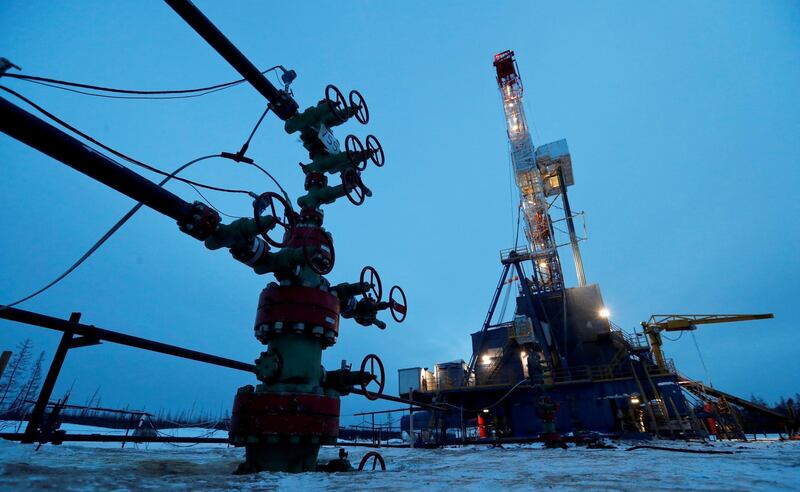For now, it may seem that Eurasia and East Asia have teamed up against Oceania. China faces a harder line from Washington while EU foreign policy chief Josep Borrell's visit to Russia was unsuccessful. Traditional energy is at the core of the Russia-China relationship for now, but new energy is set to drive them apart.
The future relationship is outlined by Chinese President Xi Jinping’s declaration in September that his country would achieve carbon-neutrality by 2060, and on the Russian side, the energy strategy to 2035 adopted in April.
The two countries have a symbiotic relationship along their lengthy frontier. Russia is first in the world in gas and oil exports, third in coal and a leading producer of key minerals such as platinum, silver, cobalt, nickel and uranium.
Conversely, China is the largest importer of all three fuels and the world’s main user of most minerals. It is trying to replace coal with gas to reduce air pollution.
Russian energy exports have traditionally gone west. Fossil fuel sales to Europe use existing infrastructure and are highly profitable but look more problematic with the continent’s slow economy, its efforts to diversify supplies and end monopolistic practices, and US opposition to new pipeline projects that bypass Ukraine, particularly Nord Stream II under the Baltic Sea from Ust-Luga to Greifswald in Germany.
Most importantly, Europe’s zero-carbon plans and its turn to renewables and electric vehicles threaten Russian fossil fuel sales.
Not surprisingly, Moscow has catered to the Chinese market via the East Siberian Oil Pipeline (opened in 2009), the Power of Siberia gas pipeline (December 2019) and possibly the Altai gas pipeline to western China. Shipments from its Arctic liquefied natural gas plants reach China through the Northern Sea Route that runs east through the quickly melting polar ocean.
Western sanctions have deepened Russian dependence on China. The China National Petroleum Corporation and the Silk Road Fund hold about 30 per cent of the Yamal LNG venture. The CNPC and the China National Offshore Oil Corporation have taken stakes in the next project, Arctic II LNG.
State oil company Rosneft says its next big project, Vostok in east Siberia, could produce about 2.3 million barrels per day of oil and 50 million tonnes of LNG by 2030, mostly destined for East Asia via the Northern Sea Route.
Rosneft’s chief executive Igor Sechin, seen as Mr Putin’s right-hand man, said the project will cost about $157 billion. The company is in discussions with Chinese, Indian and western investors.
However, the two countries’ interests also clash in important areas. Russia’s Far East federal district, twice the area of India, contains 6 million people while 100 million live in the neighbouring provinces in China.
Tsarist Russia gained large slices of Outer Mongolia and Manchuria from the treaties of Aigun (1858) and Beijing (1860). The Soviet Union and Maoist China were involved in serious skirmishes over disputed areas in 1969, in turn helping convince Richard Nixon, US president at the time, that Chinese Communists were a worthwhile counterweight to their Soviet comrades.
China’s Belt-and-Road Initiative involves massive investment in inner Eurasia, a traditional Russian playground, and the Middle East, where Moscow has recently gained influence. Although China’s influence in these areas is felt more in economics than politics, this will surely follow, in the manner of expansionary powers.
China has an interest in the free flow of energy commodities while Russia’s motives lie in control and protecting monopolies. However, it has lost ground, for instance in Turkmenistan, holder of the world’s fourth-largest gas reserves, which used to export via Russia. The Chinese now produce and buy most of Turkmenistan's gas.
Disruptions of competitors’ supplies that raise oil and gas prices are helpful to Moscow but negative for Beijing.
The rising source of tension and inequality in the relationship, however, comes from the tectonic shift in global energy. Russia’s energy strategy leans almost entirely on fossil fuels. It acknowledges emerging sources such as renewables mostly as threats. Russia’s own massive land mass and potential for wind and solar generation is untapped.
State gas company Gazprom has only begun, rather reluctantly, to study hydrogen and it is late to the party as it was with LNG, despite its long-time traditional partner Germany clamouring for the new fuel. Russia has done little in carbon capture and storage, even though that fits naturally with its fossil fuel industry.
Projects such as Vostok or Arctic LNG will still be producing in 2050 and well beyond the year that China should be approaching net-zero emissions. Russian fuel exports are a useful bridge for China - if Beijing ensures Russia bears most of the bill and repays the associated Chinese loans well before mid-century.
Meanwhile China considers solar, wind, batteries, electric vehicles, long-distance ultra-high voltage transmission and other such new low-carbon approaches to be a core part of its strategy for future economic growth, climate leadership and technology dominance.
Russia shows no signs of similar retooling and will not do so without a more constructive relationship with the West.
The long rule of Mr Putin, still only 68, has brought stability and ascendancy to Russia’s hydrocarbon industry. Although far more efficient and flexible than during the days of Leonid Brezhnev, budget dependence on fossil fuel exports is even deeper and signs of economic stagnation are worrying.
Russia will eventually face an uncomfortable choice between being a dwindling resource option for Beijing or fundamentally reorienting its economy and politics.
Robin Mills is chief executive of Qamar Energy and author of The Myth of the Oil Crisis






